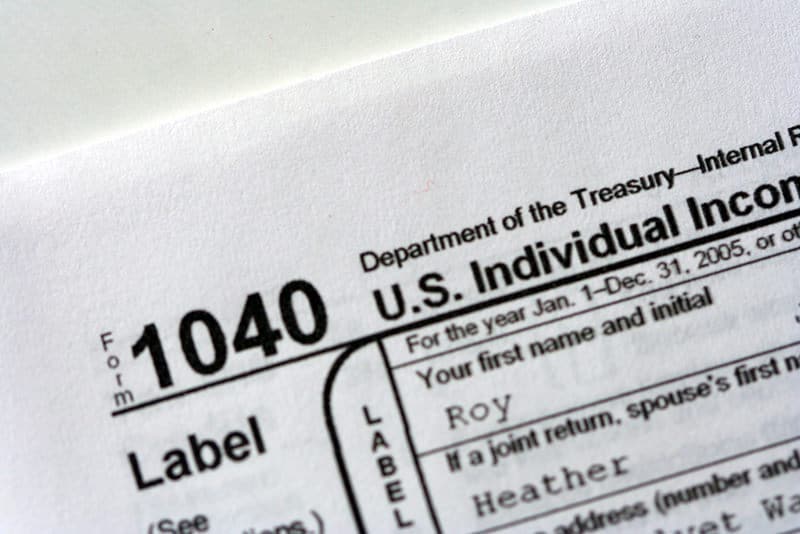 Remember last summer when Republican leaders were pushing for a simpler tax code, so simple you could put it on a postcard? Well, they’ve delivered on one of those two things.
Remember last summer when Republican leaders were pushing for a simpler tax code, so simple you could put it on a postcard? Well, they’ve delivered on one of those two things.
The Tax Cuts and Jobs Act, which Republicans authored and pushed through Congress last December, changed tax law significantly. It eliminated a few taxes and deductions. But primarily, it delivered nearly $1.5 trillion in tax cuts, mostly to benefit corporations and people inheriting large estates.
Paying for that will require massive cuts to the programs and services the rest of us rely on. Certainly not worth the far more modest tax cut most of us will only temporarily receive.
The 2017 Tax Cuts Act also added some new complications for all the Americans who file their taxes using some version of the 1040. They have indeed managed to get the 1040 form down to postcard size. The problem is, their changes do more harm than good.
The new 1040 will increase:
1) Taxpayer burden and confusion
The Tax Act didn’t actually simplify the tax code, so completely revising the 1040 was unnecessary. The vast majority of Americans are filing electronically and using tax software, so a shorter “postcard” form does not change the questions they are answering to complete their return, it only makes the resulting forms more complicated to understand.
The current 1040 listed each type of income, deduction, credit, or tax on an individual line, all on a single two-page form. At our free Volunteer Income Tax Assistance (VITA) sites, we could easily review the 1040 and explain to taxpayers their income taxes and credits.
The new postcard 1040 instead comes with six different pages of new “schedules” (tax forms), each with individual line items to be added up and entered on the 1040. Some returns won’t need any schedules, some will need multiple schedules (in addition to the old schedules and forms). Tax software companies will be working furiously over the next six months to incorporate the new tax law and tax forms into their calculations. Hopefully they get it right.
One thing is certain: confusion from the new postcard format will decrease taxpayers’ understanding of how their decisions, household finances, and government policies affect their taxes and credits. For example, the tax implications of the Affordable Care Act are now spread across one form and 3 schedules.
2) Errors and omissions
The tax code is already confusingly complex – thus the welcome promise of boiling it down to a postcard. The increased complexity of the 1040 postcard format and its multiple pages, however, will only create more opportunities for errors and omissions by taxpayers, especially for vulnerable households. For example:
- According to 2015 IRS tax return statistics, over 22 million tax filers claimed the Child Tax Credit through the 1040. The 1040 postcard requires taxpayers to submit an additional form to claim this refund.
- Over 8 million low-income tax filers who contribute to a Retirement Account and who annually claim the Retirement Savings Contribution Credit will now also have to complete an additional form.
Making the tax filing process more confusing will pose a significant barrier for tax filers with the least resources to navigate the tax filing system: people who are low-income, elderly, disabled, or who have limited English proficiency. They will be more likely to miss deductions they sorely need. We expect it will send new people to our tax sites who aren’t sure how to complete the new form or deal with the tax law changes.
At our VITA sites, we’ll be here to help. But spreading taxpayer information to multiple forms and schedules will create a new challenge for our quality reviewers who check each return for accuracy before submission. It will be harder for them to quickly see errors or to determine where errors originated to quickly correct them. That means a longer process for our low-income clients, who already have little time to spare.
3) Identity theft and other potential security concerns
The form is postcard-sized, but will need to be put in an envelope along with any additional schedules, forms and documents such as a W-2, and mailed. Since the IRS does not print and distribute 1040 forms at the library anymore, most of us will be printing it from the IRS website or completed from tax software.
Many of the old privacy and theft concerns about paper tax forms will resurface. An improperly prepared or secured tax return will expose taxpayer information and compromise the identity and personal information of millions of taxpayers who mail their tax returns.
4) Costs for taxpayers and preparers
Many paid preparers assess fees based on the number of forms and schedules that are required to file an accurate return. The addition of up to six more forms and schedules to the 1040 will result in increased fees, especially for low-to-moderate income Americans who choose to have their return prepared by a paid professional.
For our free Volunteer Income Tax Assistance sites, this will mean additional costs for paper and ink to print copies of returns for taxpayers, reducing funding available to offer additional services to taxpayers.
5) Costs to the government, in both dollars and public distrust
The proposed 1040 postcard return creates a heavier burden on the IRS to process an increased number of physical materials. We will lose years of progress made towards more secure and efficient electronic filing. The IRS will incur the cost of printing more forms to distribute to the public.
Because that’s the ultimate irony: though it looks like it could all fit on one sheet of paper, the new 1040 will have to printed as 2 half-filled pages, apparently to look like a postcard, even though it isn’t one.
Now this new 1040 isn’t going to harm people as much as the many truly distressing policy changes – in regards to poverty policy and civil and human rights – that this administration has put forward. But it is going to make tax time a little harder for all of us, just so someone can say they got the tax return to the size of a postcard.
Yet another example of a promise made but not truly delivered. Though it will likely achieve one core aim: increasing public disdain towards government and taxes, and of the common good they’re meant to support.




Totally agree. Spreading the old 1040 over 6 new schedules SUCKS and adds more time. With the old 1040 everything was on 2 pages. Now I have to worry about leaving something out unless I still read all 6 schedules.
Yah, and making the print much smaller on the new 1040 shows the IRS intelligence to shrink the form.